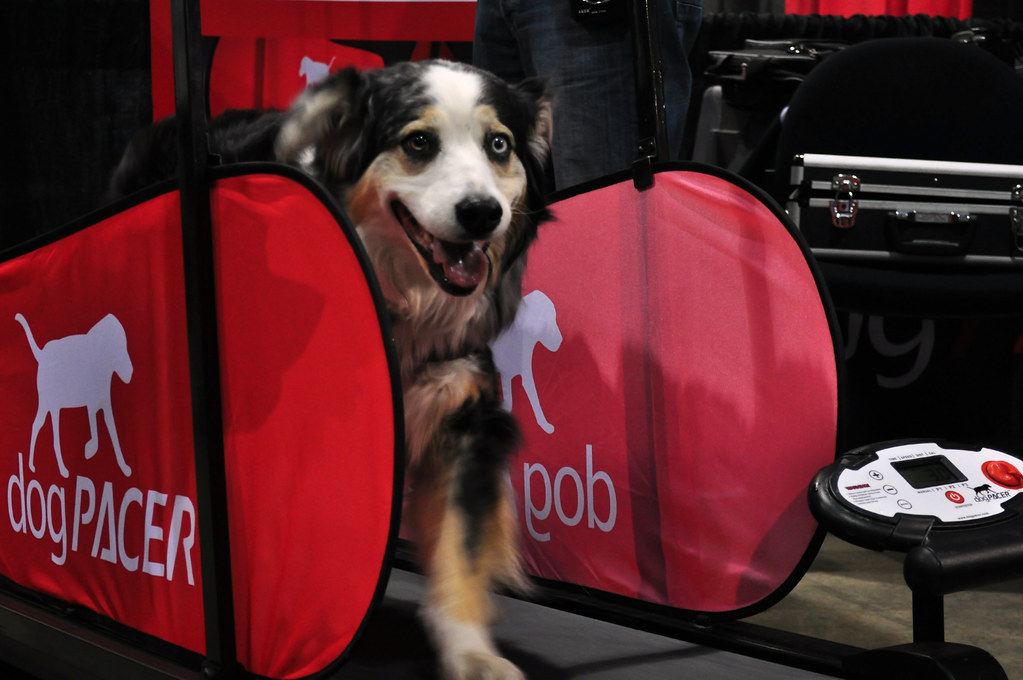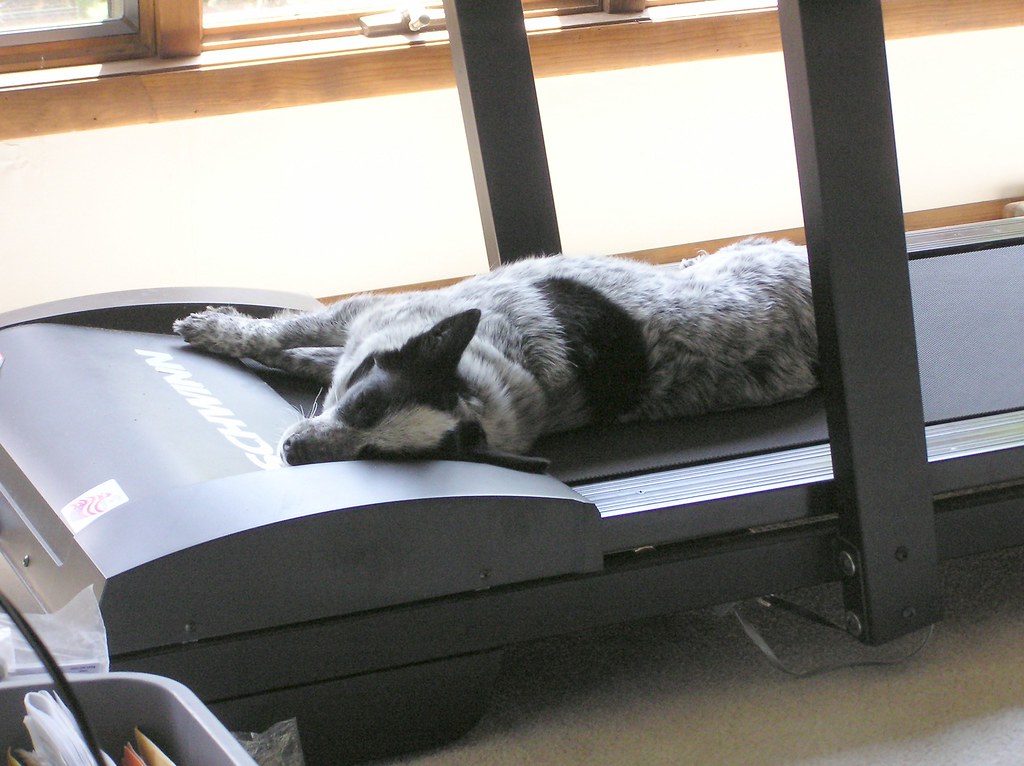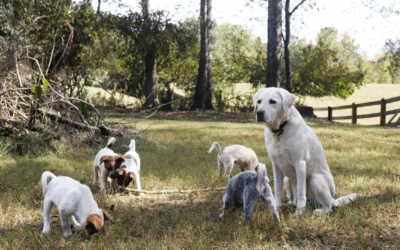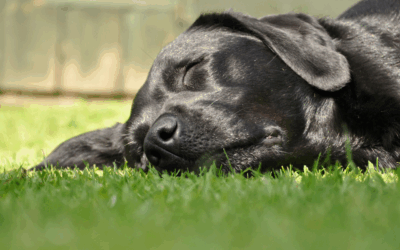When I first watched a reactive dog transform from frantic energy to focused calm through structured treadmill work, I knew we had discovered something powerful. That moment changed how I viewed canine fitness—it’s not about wearing dogs out, but about building confidence through controlled movement.
As the founder of Canine Cardio in Northern Virginia, I’ve spent nearly two decades working with dogs of all temperaments and energy levels. What I’ve learned is that the most anxious, destructive, or hyperactive dogs often become the most balanced when given purposeful outlets for their energy. That’s why we created the Canine Cardio Gym—Northern Virginia’s first structured dog fitness space designed around safety, leadership, and holistic well-being.
Treadmill training represents a fundamental shift in how we approach canine exercise. Instead of chaotic park visits or rushed walks that leave dogs overstimulated, controlled cardio creates an environment where dogs can focus, build stamina, and develop the calm confidence that transforms behavior. This comprehensive guide will explore how structured treadmill training benefits your dog’s physical health, mental state, and overall quality of life.

“DogPacer Doggie Treadmill” by ShardsOfBlue is licensed under CC BY-SA 2.0
Is a Dog Treadmill a Good Idea? (Spoiler: Absolutely—When Done Right)
Many people misunderstand dog treadmills, viewing them as shortcuts for “lazy owners.” This couldn’t be further from the truth. Professional treadmill training is a trainer’s secret weapon for building structure, rehabilitation, and focused leadership.
The controlled environment of a dog treadmill eliminates the variables that make traditional exercise unpredictable. There’s no weather interference, no distractions from other dogs or people, and no leash tension pulling your dog in different directions. Instead, your dog experiences pure, focused movement that builds both physical stamina and mental discipline.
From a fitness perspective, treadmill workouts improve cardiovascular health, muscle tone, coordination, and endurance. Dogs develop better body awareness and gait patterns while strengthening their core stability. The consistent surface and controlled speed allow for precise conditioning that’s impossible to achieve during outdoor walks.
One of my most memorable success stories involved a German Shepherd named Max who struggled with extreme reactivity during outdoor walks. His owner was exhausted from trying to exercise him safely while managing his overstimulation around triggers. Within weeks of structured treadmill training, Max learned to channel his energy productively. The controlled environment taught him impulse control and focus, which transferred beautifully to his outdoor behavior.
The mental benefits often surprise owners the most. Dogs who participate in regular treadmill sessions develop increased confidence, better impulse control, and the ability to self-regulate their energy. This isn’t about physical exhaustion—it’s about teaching dogs to work with purpose and calm determination.
Do Vets Recommend Dog Treadmills?
Veterinarians and canine rehabilitation specialists increasingly recommend treadmill training for specific health and fitness goals. When properly supervised by trained professionals, dog treadmills provide safe, controlled exercise that’s particularly beneficial for dogs with mobility challenges, weight management needs, or post-surgery recovery requirements.
At Canine Cardio, we collaborate closely with local veterinarians to design treadmill programs for dogs managing arthritis, hip dysplasia, or weight-related health issues. The low-impact, consistent movement helps maintain joint mobility while building supporting muscle strength without the stress of uneven outdoor terrain.
Post-surgical dogs often benefit tremendously from controlled treadmill work during their rehabilitation phase. We can precisely control the speed, duration, and incline to match their recovery timeline, gradually building strength and confidence as they heal. This controlled environment allows us to monitor their progress closely and adjust their program based on their veterinarian’s recommendations.
However, veterinary approval is crucial before beginning any treadmill program, especially for dogs with existing health conditions. Our certified Pack Leaders work with your vet to ensure every session supports your dog’s specific health needs while promoting safe, progressive improvement.
The key difference between our approach and attempting treadmill work at home lies in professional oversight. Our team monitors each dog’s gait, breathing, temperature, and stress signals throughout every session, making real-time adjustments to ensure safety and maximum benefit.
Can I Use a Human Treadmill for My Dog?
While technically possible, using a human treadmill for your dog isn’t recommended for safety and effectiveness reasons. Human treadmills are designed for longer strides, higher speeds, and bipedal movement patterns that don’t match canine biomechanics. It’s recomended not to take the risk.
Most importantly, human treadmills lack the side rails that provide crucial safety and confidence for dogs learning treadmill skills. Dogs need the security of barriers to feel safe while adjusting to the moving surface, especially during their initial training phases.
Dog-specific treadmills from companies like DogPACER, JogaDog, and commercial fitness manufacturers are engineered to support canine gait patterns, posture, and natural movement. These machines feature appropriate belt speeds, surface textures, and safety features designed specifically for four-legged users.
At the Canine Cardio Gym, we use commercial-grade canine treadmills that are quieter, more stable, and adjustable to each dog’s natural rhythm. These machines allow for gradual speed increases, appropriate inclines, and emergency stops that prioritize safety above all else.
The investment in proper equipment reflects our commitment to providing the safest, most effective experience possible. When dogs feel secure and confident on properly designed equipment, they can focus on the movement itself rather than worrying about their footing or safety.
The 5-Second Rule & Safe Outdoor Alternatives
Every dog owner should know the “5-second rule”: if you can’t hold your hand flat on the pavement for five seconds, it’s too hot for your dog’s paws. This simple test reveals why year-round exercise alternatives like treadmill training are essential for consistent fitness routines.
Extreme weather creates serious challenges for maintaining regular exercise schedules. Summer heat can cause paw burns and overheating, while winter ice and salt create hazards and discomfort. Rainy seasons leave dogs understimulated and owners frustrated with missed exercise opportunities.
Treadmill training provides a reliable, climate-controlled solution that maintains fitness consistency regardless of outdoor conditions. This doesn’t replace the mental stimulation and sensory experiences of outdoor adventures—it complements them by ensuring your dog receives adequate physical exercise even when outdoor conditions aren’t ideal.
Our approach at Canine Cardio balances controlled indoor fitness with structured outdoor experiences. We offer supervised on-leash community walks when weather permits, and our Snouts & Stouts café provides a calm, social environment where dogs and owners can enjoy controlled outdoor time together.
This balanced approach recognizes that dogs need both purposeful exercise and environmental enrichment. Treadmill sessions fulfill the cardio requirements while outdoor experiences provide mental stimulation and social opportunities in a structured, manageable way.
How Treadmill Training Reduces Behavioral Issues For Many Dogs
Excessive Barking and Anxiety-Related Behaviors
Many dogs develop excessive barking, destructive chewing, and anxiety-related behaviors because they lack structured outlets for their physical and mental energy. Traditional exercise often fails to address these issues because it doesn’t provide the focused, purposeful work that satisfies a dog’s need for structure and leadership.
Treadmill training addresses behavioral problems at their root by providing dogs with meaningful work that engages both body and mind. The focused nature of treadmill exercise helps dogs learn impulse control, patience, and the ability to work calmly under guidance. These skills transfer directly to daily life, reducing problematic behaviors that stem from pent-up energy and lack of mental engagement.
One of our most dramatic transformations involved Luna, a young Australian Cattle Dog whose destructive chewing and incessant barking had strained her family’s patience. Traditional dog park visits and long walks seemed to increase her reactivity rather than calm her. Within a month of incorporating structured treadmill sessions into her routine, Luna’s destructive behaviors decreased significantly, and her barking became purposeful rather than compulsive.
The key lies in understanding that movement plus leadership equals calm confidence. When dogs learn to work cooperatively with humans in a structured environment, they develop the self-regulation skills necessary for balanced behavior. The treadmill becomes a tool for teaching focus, patience, and the satisfaction that comes from purposeful work.
This behavioral improvement isn’t about physical exhaustion—it’s about mental fulfillment. Dogs who participate in regular structured exercise develop better stress management, improved focus, and the confident calm that comes from knowing their role and expectations.

How We Create The Best Workout For Your Dog at Canine Cardio
Every dog enters our program with a comprehensive assessment that evaluates their current fitness level, behavioral tendencies, confidence, and any special considerations. This evaluation forms the foundation of their personalized training plan, ensuring that each dog progresses at their own pace while building confidence and skills.
Our guided treadmill progression follows a carefully structured approach. We begin with simple introduction sessions where dogs become comfortable with the machine while it’s stationary. This builds familiarity and positive associations before any movement begins. Once dogs show calm confidence around the equipment, we progress to extremely slow movement with continuous encouragement and support.
The progression from first steps to confident trotting varies dramatically between dogs. Some confident, athletic dogs may advance quickly, while anxious or older dogs require more patience and gradual building. Our certified Pack Leaders read each dog’s body language and stress signals, adjusting the pace and intensity to maintain positive experiences throughout the learning process.
We track progress meticulously, celebrating milestones that might seem small but represent significant achievements for each individual dog. A nervous rescue dog’s first comfortable minute on the treadmill deserves the same recognition as an athletic dog’s first sustained trot. These celebrations build positive associations and maintain enthusiasm for the work.
Our personalization extends beyond the treadmill itself. We consider each dog’s daily routine, energy levels, behavioral goals, and family lifestyle when designing their fitness program. Some dogs benefit from morning sessions that set a calm tone for the day, while others do better with afternoon workouts that help them decompress from daily stimulation.
Beyond Exercise: Building a Lifestyle of Balance and Confidence
Treadmill training represents just one component of our holistic approach to canine wellness. At Canine Cardio, we view fitness as the foundation for overall well-being, but our ultimate goal is to develop confident, balanced dogs who thrive in all aspects of their lives.
Our comprehensive ecosystem includes structured daycare that emphasizes calm energy and purposeful activity, behavior training through the Canine Cardio Academy, and social opportunities at Snouts & Stouts. Each component reinforces the others, creating a lifestyle centered on wellness, structure, and community.
The confidence dogs develop through structured fitness work translates to improved behavior, better social skills, and stronger bonds with their families. When dogs feel physically strong and mentally engaged, they approach new experiences with calm curiosity rather than anxiety or reactivity. This transformation affects every aspect of their daily life, from vet visits to family gatherings.
Our philosophy recognizes that a healthy, balanced dog doesn’t just live longer—they live better. Physical fitness, mental stimulation, and emotional confidence combine to create dogs who are true companions rather than management challenges. This holistic approach benefits the entire family by reducing stress and increasing the joy of dog ownership.
The community aspect cannot be understated. Dogs who participate in our programs become part of a pack that values structure, wellness, and mutual support. Owners connect with like-minded individuals who understand the commitment to providing excellent care for their canine companions.
Bring Your Dog’s Fitness and Well-Being to the Next Level
If you’re ready to explore how structured treadmill training could benefit your dog, we invite you to schedule a consultation with our certified team. Every dog’s journey begins with understanding their unique needs, goals, and current fitness level.
Our initial assessment provides valuable insights into your dog’s potential, regardless of age, breed, or current conditioning. We work with dogs ranging from energetic puppies who need focus to senior dogs maintaining mobility, and everything in between. The beauty of controlled cardio lies in its adaptability to each dog’s specific requirements.
Getting started is simple: visit our website to schedule your first treadmill session, or stop by Snouts & Stouts to learn more about our comprehensive approach to canine wellness. Our team can answer questions, provide demonstrations, and help you understand how structured fitness might fit into your dog’s lifestyle.
Movement builds confidence, and confidence changes everything. When dogs develop the calm assurance that comes from purposeful work and physical capability, they approach life with the balanced energy that makes them ideal companions. This transformation doesn’t happen overnight, but with consistent structure and professional guidance, every dog can develop the confidence and fitness that enhances their quality of life.




